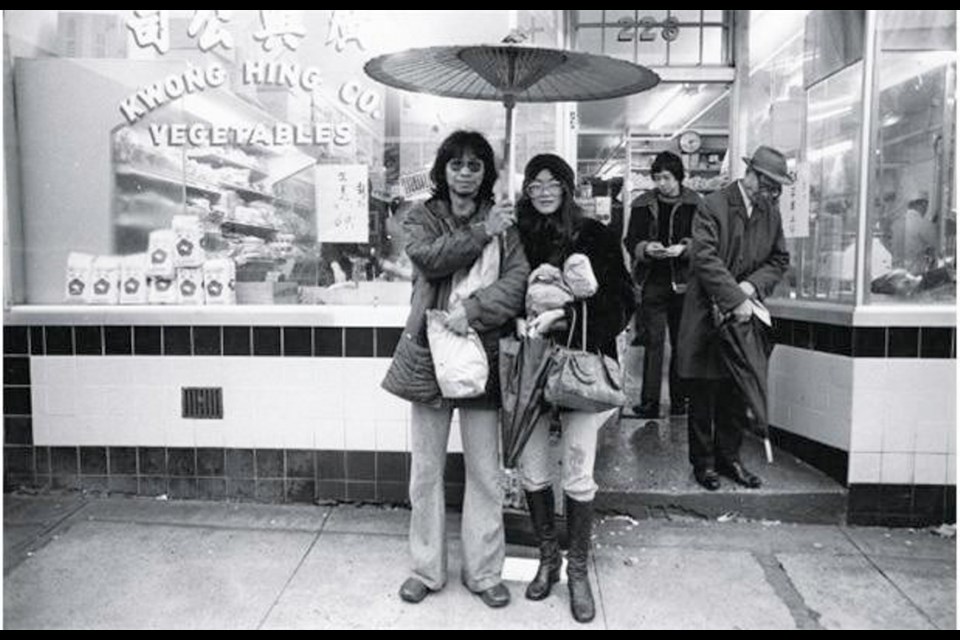It wasn’t until recently, when Jim Wong-Chu looked at his photographs for the first time in about 30 years, that he realized what they recorded.
At the time, he was too caught up in what he was doing to really pay attention to what they meant. Taken between 1973 and 1981, the photographs show Chinatown through Chinese Canadian eyes.
Wong-Chu’s photographs are both simple portraits of working people and images of an era. They show Chinese Canadians fighting against City Hall to stop a freeway from razing their community as well as protesting against city and provincial officials for trying to enforce draconian health regulations that would have meant the end of selling barbecued duck, a traditional food sold safely for thousands of years.
They also show Chinese Canadians organizing among themselves to democratize the Chinese Benevolent Association, the community’s main organization, which had over the years lost touch with a new generation.
Wong-Chu was a Chinese Canadian version of Fred Herzog, the photographer who emigrated from Germany after the Second World War and captured Vancouver’s street-life in memorable photographs in the 1950s and 1960s.
“I really didn’t understand how momentous these events were — until 30 years later,” Wong-Chu said.
“I realize in hindsight that the community was fighting to assert itself and was fighting to maintain its dignity in very adverse and hostile conditions. Ironically, the community was at its zenith in terms of its vibrancy.”
Altogether, Wong-Chu has about 500 negatives of which 80 have been turned into photographs and shown for the first time in an exhibition at Centre A. The photographs are accompanied by poems by Wong-Chu and Paul Yee.
The photographs not only tell the story of Vancouver’s Chinatown, they’re also part of Wong-Chu’s own journey as an artist and writer.
Wong-Chu was born in Hong Kong and described himself as a nomad for many years. He didn’t settle in Vancouver until 1965 when he was an adult.
As someone other Canadians called Chinese, Wong-Chu found himself drawn to Chinatown to figure out what it meant to be someone of Chinese descent living in Canada.
Eventually, he ended up going to art school at the Vancouver School of Art, now called Emily Carr University of Art + Design. Influenced by U.S. documentary and portrait photographers such as Walker Evans and Diane Arbus, he thought he’d photograph where he lived in Chinatown.
As part of his process, he developed a unique approach. He used a low f-stop and long exposure with his 28 mm wide-angle lens. What that did was bring both the subject and the background into focus which was different from traditional portraits that tended to have the subject in the foreground in focus.
He didn’t use a tripod. Instead, he had to develop a steady hand and often had to hold his breath, especially when he took long exposures in low light.
As well, Wong-Chu vowed not to “steal” photographs by taking them surreptitiously. He always asked people for their consent and worked to find out something about the people he was photographing.
Later, he realized the narratives associated with each photograph became more important to him. He went on to do creative writing at UBC and became known as a writer. When his book Chinatown Ghosts was published in 1986, it marked the first poetry book published by an Asian Canadian in the country. He’s both a founder and executive director of the Asian Canadian Writers’ Workshop.
Back when he was in art school, he recalled growing bored one semester. He decided to skip school and spend all his time in Chinatown.
“About five weeks before the end of the term, I said, ‘OK, I’ve got to get a portfolio together.’ I went to people in Chinatown and said I wanted to photograph you and you and you. I created a portfolio.
“My photography instructor Jim Breukelman called me in and said: ‘You haven’t been around, I haven’t seen you, I didn’t know what you’re doing. I was going to fail you. After I saw your photographs, I gave you an A.’”
Many years later, Tyler Russell, the executive director/curator of Centre A, saw the portfolio that Wong-Chu had made for his photography course at the Vancouver School of Art. He liked it so much he decided to hold an exhibition of the work.
“The thing that was to me so shocking when I had a chance to look back at the photographs is that you can see how vibrant the community was,” Wong-Chu said.
“Chinatown was fighting for its life as a community.”
Wong-Chu will be in the gallery today from 1 pm to 4 pm.
Jim Wong-Chu: Photographs 1973-1981: People, Place Politics continues to Saturday, Oct. 18 at Centre A: Vancouver International Centre for Contemporary Asian Art, 229 East Georgia St.



